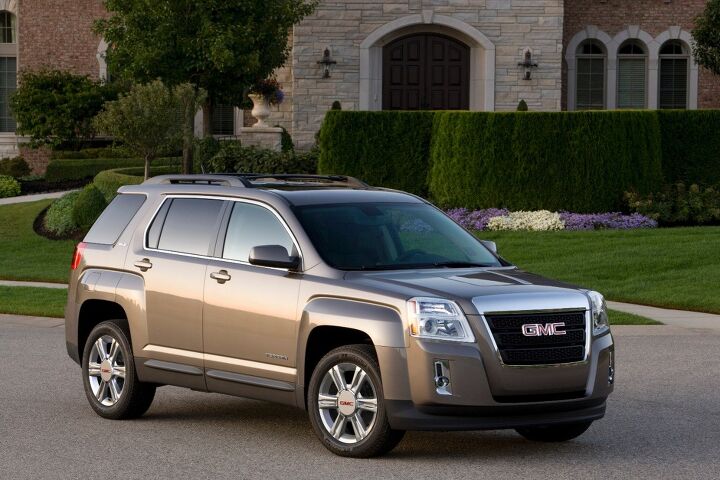With No New Product Promised, GM Canada Workers Could Walk Off the Job at Midnight

GM Canada and the union representing Detroit Three autoworkers north of the border have entered their final day of contract talks ahead of a midnight strike deadline.
Unless both sides achieve a breakthrough today, there’s little reason to believe a walkout at the company’s Oshawa, Woodstock and St. Catharines, Ontario facilities won’t occur as the clock strikes twelve.
A deal with Unifor hinges on new product commitment from GM Canada, especially for its Oshawa assembly plant. Product is drying up at the century-old plant, which could be shuttered within a couple of years if GM doesn’t allocate new vehicles to its two production lines.
As of yesterday, the product pipeline was still dry, even as Unifor president Jerry Dias put on a cautiously hopeful face.
“I’m feeling much better today than I did yesterday but I’m still not feeling great,” Dias told the Globe and Mail. “We are having some constructive conversations, finally.”
Last week, both sides were said to be far apart in negotiations, with little to no movement on the key bargaining issue. Despite Dias’ claims, a “high-ranking” union source told the newspaper that GM has not offered any new product for the Oshawa plant, which employs about 2,500 hourly workers.
Hampering the talks is the simple reality that GM has no product to send to Oshawa. The automaker’s roster of existing and planned vehicles are all allocated to other plants, while the Oshawa-built Chevrolet Impala, Buick Regal and Cadillac XTS (as well as overflow Chevrolet Equinox production) can easily be sent elsewhere.
GM is Unifor’s target company in this round of contract talks. Any agreement with that automaker will guide contract talks with the remaining two. In the event of a strike, GM Canada’s CAMI assembly plant, covered by a separate collective agreement, has vowed to not use replacement parts sent from U.S. plants. That could halt the production of Equinox and GMC Terrain crossovers.
[Image: General Motors]

More by Steph Willems
Latest Car Reviews
Read moreLatest Product Reviews
Read moreRecent Comments
- JMII Based on the human drivers I encounter everyday I'll happily take my chances with a computer at the wheel.The highway driver assist system on my Santa Cruz is great, it can self drive perfectly in about 90% of situations. However that other 10% requires you to be in control and make decisions. I feel this is the problem with an AI driving a car, there are times when due to road construction, weather conditions or other drivers when only a human will know what to do.
- Hari Your route home sounds like the perfect stretch for a car like the Alfa Romeo Giulia. Its renowned handling and dynamic performance make it an ideal match for those curves. For enthusiasts or potential owners interested in understanding all the capabilities of the Giulia 2017, the owner’s manual is an invaluable resource. Check it out here: https://chatwithmanuals.com/automobiles/2017-alfa-romeo-giulia-owners-manual/. Our AI-powered chat makes navigating the manual simple, helping you quickly find specific details about the car's features and specs. Perfect for making the most out of those driving moments and truly understanding your vehicle!
- Dale I'd consider the RAV4 if the Prime were on the table as paying for gas is for suckers. Otherwise, we have a couple of Mazdas and they are swell. I've driven older versions of both and the CX-5 is a nicer place to live.
- Haran Spot-on review of the Mercedes-AMG GT’s price adjustments and new features! For those intrigued by the all-wheel drive and enhanced features of the latest model, you can delve deeper with the complete operator's manual available here: https://chatwithmanuals.com/automobiles/mercedes-amg-gt-operators-manual-edition-c2020/. It’s a fantastic resource for understanding all the specs and new additions without getting bogged down by the complexity typically associated with car manuals. Chat with the manual using AI to quickly find exactly what you need to know about this sporty beast. Perfect for those who appreciate detailed insights on their luxury investments!
- Flashindapan Beautiful color combinations. I assumed they stop selling the TT here at least five or six years ago.


































Comments
Join the conversation
So unless the company allocates more production there instead of somewhere that makes (more?) money, they are going to stop working? I'm understanding why GM needed to be bailed out.
A decade ago the Canadian and Ontario Governments paid billions to take 11.7% ownership in GM to help save them from a forced rummage sale. In a sane world that taxpayer investment would have come with long-term requirements for GM to keep a certain percentage of its global production in Canada. In a saner world GM would have been sold piecemeal and the Canadian factories would have different owners. Most likely, those owners wouldn't have the financial and political clout to survive a strike by Unifor. Instead we have the current situation, where GM is flush with cash and holds all the cards. Like it or not, the power of the auto workers has always been the threat of a strike...Mutual Assured Destruction, if you will. Now, the survival of GM is secured not by compromise with the workers but by the US and Canadian Govts. Without the power to bring GM to its knees, Unifor is reduced to begging its Govt to give GM more handouts so GM will continue to employ them. In short, the belief that GM is 'too big to fail' has sacrificed the interests of auto workers in favor of the interest of GM. Funny how those heartfelt plans to save the working class always entail giving large corporations loads of money, and always have the "unintended" consequence of screwing the middle class.